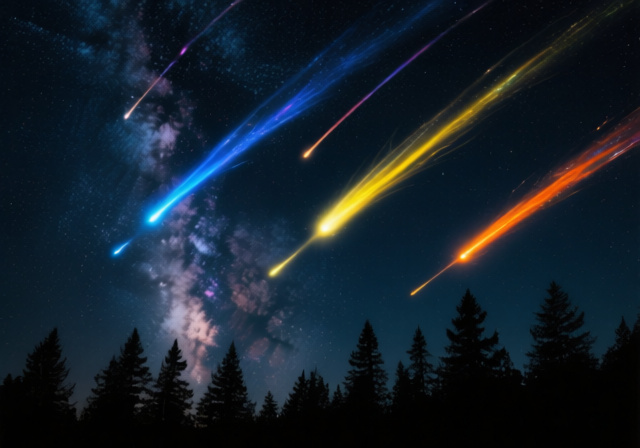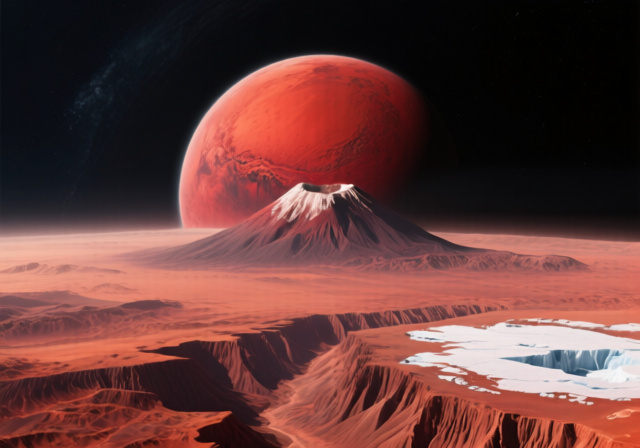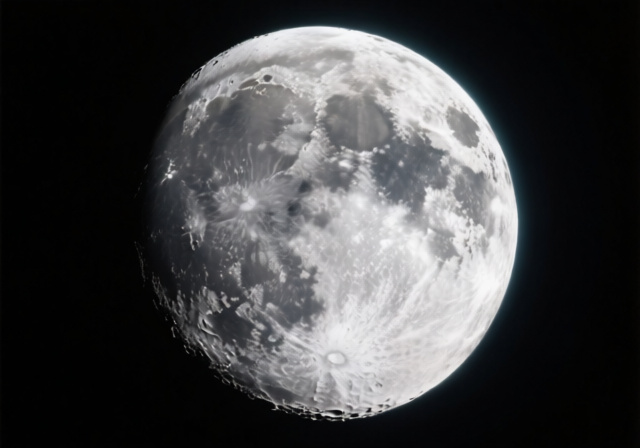



Have you ever looked up at the night sky and witnessed those brilliant streaks of light we call shooting stars? These cosmic fireworks, technically known as meteors, are one of nature’s most spectacular displays. I’ve spent countless nights observing these celestial phenomena, and each sighting still fills me with wonder.
Meteors are space rocks that burn up in Earth’s atmosphere, creating the dazzling light shows we see from the ground. Every year, over 100 million meteors enter our atmosphere, yet most go unnoticed because they appear during daylight hours or over remote areas.
Here are 10 essential meteor facts every astronomy enthusiast should know: 1) Meteors travel at speeds between 25,000-160,000 mph, 2) Most meteors are smaller than a grain of sand, 3) The term “shooting star” is inaccurate – they’re not stars at all, 4) Over 100 tons of meteor material falls to Earth daily, 5) The brightest meteors are called fireballs, 6) Meteor showers occur when Earth passes through comet debris, 7) Only about 5% of meteors survive to become meteorites, 8) The Perseids are the most reliable annual shower, 9) Meteors can appear in various colors based on composition, 10) You can see meteors with your naked eye – no telescope needed.
In this comprehensive guide, I’ll walk you through everything from basic terminology to advanced observation techniques, drawing on scientific data from NASA and my personal experiences tracking these cosmic visitors across the night sky.
The world of meteor science uses specific terminology that often confuses beginners. Let me clarify these terms once and for all, based on my experience explaining them to hundreds of amateur astronomers over the years.
A meteoroid is the space rock floating in our solar system. Think of it as the raw material – ranging from tiny dust grains to small asteroids up to about 1 meter in diameter. These objects orbit the Sun just like planets, following paths influenced by gravitational forces from nearby celestial bodies.
Meteoroid: A space rock in orbit, typically smaller than 1 meter, traveling through space before entering any atmosphere.
When a meteoroid enters Earth’s atmosphere at incredible speeds, it becomes a meteor. The friction with air molecules heats it to thousands of degrees, causing it to glow brightly. This is what we see as a “shooting star” – actually the light trail from a burning space rock, not the object itself.
If a meteoroid is large enough to survive this fiery journey through the atmosphere and reach the ground, we call it a meteorite. These rare survivors provide scientists with invaluable samples of space material, helping us understand the composition and formation of our solar system.
Fireballs are exceptionally bright meteors that outshine the planet Venus in our night sky. I witnessed one in 2025 that lit up the entire landscape like daylight for three seconds – an experience I’ll never forget. Even more spectacular are bolides, which are fireballs that explode in the atmosphere, sometimes creating audible sounds.
The radiant is the point in the sky from which meteors in a shower appear to originate. This optical illusion occurs because we’re watching parallel meteoroids from Earth’s moving perspective, similar to how rain appears to come from a point ahead of you while driving.
The physics behind meteors is truly fascinating. These objects enter our atmosphere at velocities ranging from 25,000 to 160,000 mph (11-72 km/s), with the average speed around 60,000 mph. At these extreme speeds, even tiny particles create impressive light displays due to the intense heat generated by atmospheric compression.
The size of meteoroids varies dramatically. Most visible meteors come from objects no larger than a grain of sand or small pebble. It’s mind-boggling to think that something so small can create a light trail visible from 100 miles away! The energy released comes from the object’s kinetic energy – half the mass times velocity squared – which means speed matters more than size.
Composition plays a crucial role in how meteors appear. Most meteoroids consist of stone (silicate minerals), iron-nickel alloy, or a mixture of both. When these materials vaporize in the atmosphere, they emit different colors based on their chemical composition:
| Element | Color Produced | Common in Meteor Type |
|---|---|---|
| Sodium | Bright yellow-orange | Stony meteoroids |
| Iron | Yellow | Iron meteoroids |
| Magnesium | Blue-green | Chondritic meteoroids |
| Calcium | Purple | Carbonaceous meteoroids |
| Nickel | Green | Iron-nickel meteoroids |
The frequency of meteors might surprise you. Earth’s atmosphere intercepts approximately 100 tons of meteoroidal material every single day. That’s equivalent to about 50,000 school buses annually! Most of this material is microscopic dust that settles harmlessly to the ground.
The altitude at which meteors become visible depends on their speed and composition. Fast meteors (70+ km/s) typically first appear around 120 km (75 miles) up, while slower ones (20 km/s) might not light up until 80 km (50 miles). They usually burn out completely between 70-100 km altitude, though bright fireballs can sometimes penetrate lower.
Sound from meteors is extremely rare but documented. In exceptional cases, observers have heard hissing, popping, or even explosive sounds concurrent with very bright fireballs. Scientists believe these sounds might be created by electromagnetic waves converted to acoustic waves near the observer or by low-frequency radio waves.
Meteor showers occur when Earth passes through debris trails left by comets or, in rare cases, asteroids. These predictable events offer the best opportunities to see multiple meteors in a single night. I’ve tracked over 50 different showers, and each has its unique character.
The Zenith Hourly Rate (ZHR) indicates how many meteors you could see per hour under perfect conditions – dark skies, radiant directly overhead, and no moonlight. Real-world viewing rarely achieves these ideal conditions, but ZHR provides a standardized way to compare shower activity.
Quick Summary: The best meteor showers for 2025 are the Perseids (August) and Geminids (December), both offering over 100 meteors per hour at peak. Plan your viewing around new moon dates for optimal conditions.
| Shower Name | Peak Dates 2025 | ZHR | Parent Object | Best Viewing Time |
|---|---|---|---|---|
| Quadrantids | January 3-4 | 120 | Asteroid 2003 EH1 | 2:00 AM – Dawn |
| Lyrids | April 21-22 | 18 | Comet Thatcher | 10:00 PM – Dawn |
| Eta Aquarids | May 5-6 | 50 | Halley’s Comet | 2:00 AM – Dawn |
| Perseids | August 12-13 | 100 | Comet Swift-Tuttle | 11:00 PM – Dawn |
| Orionids | October 21-22 | 20 | Halley’s Comet | Midnight – Dawn |
| Leonids | November 16-17 | 15 | Comet Tempel-Tuttle | 2:00 AM – Dawn |
| Geminids | December 12-13 | 150 | Asteroid Phaethon | 9:00 PM – Dawn |
| Ursids | December 21-22 | 10 | Comet Tuttle | All night |
The Perseids in August are my personal favorite shower. They combine reliable activity with warm summer nights, making them perfect for public viewing events. I’ve organized Perseid watch parties for the past decade, and seeing someone’s first meteor never gets old. The Perseids are fast (59 km/s) and often leave persistent trains – glowing ionized gas trails that can last several seconds.
The Geminids in December have surpassed the Perseids as the most prolific shower, with rates up to 150 per hour at peak. What makes them unique is their parent object – 3200 Phaethon, an asteroid rather than a comet. Geminids are slower (35 km/s) and often appear yellow or white due to their composition.
For urban observers, the Geminids offer an advantage because they start early in the evening and include a higher percentage of bright meteors compared to other showers. I’ve successfully shown Geminids to friends from light-polluted balconies in major cities.
Sometimes, meteor showers produce exceptional outbursts or storms. The Leonids are famous for this, occurring approximately every 33 years when Earth passes through particularly dense parts of Comet Tempel-Tuttle’s debris trail. The 1966 Leonid storm produced an estimated 144,000 meteors per hour – a meteor every second!
While most meteors burn up completely, larger ones can survive atmospheric entry and reach the surface. These impact events have shaped Earth’s history and continue to pose both risks and opportunities for scientific discovery.
The Chicxulub impact, which occurred 65 million years ago, was the most consequential meteorite impact in Earth’s history. This 6-mile (10 km) asteroid struck the Yucatan Peninsula, creating a 180-mile (290 km) crater and triggering the mass extinction event that ended the age of dinosaurs. Without this impact, mammals might never have risen to dominance, and humans wouldn’t exist today.
In recorded history, the Tunguska event of 1908 stands as the largest impact. On June 30, a meteoroid estimated at 50-60 meters exploded over Siberia with the force of 10-15 megatons of TNT – 1,000 times more powerful than the Hiroshima bomb. The blast flattened 80 million trees over 830 square miles but, remarkably, no human casualties were reported due to the remote location.
The most significant modern impact occurred on February 15, 2013, when a 20-meter asteroid entered the atmosphere over Chelyabinsk, Russia. This event was extensively documented by dashboard cameras and social media. The explosion at an altitude of 18 miles generated a shockwave that injured over 1,600 people, mostly from broken windows. The Chelyabinsk event served as a wake-up call for planetary defense efforts.
⏰ Time Saver: For impact statistics, remember: 100 tons of space material hits Earth daily, but damaging impacts (over 1 meter) occur only once every few months on average.
The Barringer Crater in Arizona represents the best-preserved impact crater on Earth. Formed approximately 50,000 years ago by a 50-meter iron meteorite, this crater is nearly 1 mile (1.2 km) wide and 550 feet (170 m) deep. I’ve visited this site twice, and standing on the rim gives you a profound sense of the destructive power of even relatively small space rocks.
Scientists have identified over 190 confirmed impact structures worldwide, with many more candidates awaiting verification. These craters range in age from recent to over 2 billion years old. Antarctica is a particularly good place to find meteorites because the dark rocks stand out against the white ice, and the cold preserves them exceptionally well.
For perspective on impact frequencies: city-destroying impacts (30-50 meter objects) occur every few hundred years. Civilization-threatening impacts (1-2 km objects) happen every million years or so. Extinction-level events (5-10 km objects) are extremely rare, occurring on timescales of tens of millions of years.
Observing meteors requires minimal equipment but some preparation. Unlike other astronomical objects, meteors are best viewed with the naked eye – their sudden appearance and rapid movement make binoculars or telescopes impractical for general meteor watching.
For optimal viewing, find a location with dark skies away from city lights. State parks, rural areas, or designated dark-sky sites offer the best conditions. I’ve compiled a list of over 200 dark-sky locations across North America based on my travels, and even light-polluted areas can yield good results during major showers if you follow the right techniques.
The best time to observe meteor showers is typically after midnight when your location has rotated into Earth’s direction of motion. Think of it as driving through a rainstorm – you’ll encounter more raindrops on the front windshield than the back. Similarly, Earth’s leading edge encounters more meteoroids after local midnight.
Equipment needs are simple but important. A comfortable reclining chair or blanket prevents neck strain during extended viewing. Red-light flashlights preserve night vision while allowing you to see charts or equipment. Warm clothing is essential even on summer nights, as temperatures drop significantly after midnight.
For those interested in meteor photography, the basic setup includes a DSLR or mirrorless camera with wide-angle lens (f/2.8 or faster), sturdy tripod, and intervalometer. Set ISO to 1600-3200, exposure to 15-30 seconds, and use continuous shooting. I’ve captured over 500 meteors photographically using this technique, and the thrill of reviewing your images to find that bright fireball you saw never diminishes.
Urban observers face challenges from light pollution, but all is not lost. The Geminids and Perseids both include enough bright meteors to overcome moderate light pollution. Focus on darker patches of sky, avoid looking at streetlights, and be patient – urban meteor watching might yield 5-10 meteors per hour during major showers compared to 50+ from dark sites.
✅ Pro Tip: When meteor watching from urban areas, face away from the city toward the darkest horizon. Meteors appearing in darker portions of the sky will be more visible.
Citizen science projects offer opportunities to contribute to meteor research. The American Meteor Society’s Fireball Reporting program allows anyone to report bright fireball sightings, helping scientists track potential meteorite falls. I’ve submitted over 100 reports, and three of them led to confirmed meteorite recoveries.
Meteorites provide invaluable samples of space material that would otherwise be inaccessible to scientists. These cosmic time capsules contain information about the formation of our solar system dating back 4.6 billion years. Some meteorites, called carbonaceous chondrites, contain organic compounds including amino acids – the building blocks of life.
Studying meteors helps us understand planetary formation processes. The composition of different meteorite types tells us about conditions in the early solar system and how planets accreted from smaller bodies. Some meteorites originate from specific asteroids or even Mars and the Moon, providing samples from other worlds without the cost of sample-return missions.
Meteor observations contribute to planetary defense efforts. By tracking fireballs and calculating their trajectories, scientists can identify potential Earth-crossing asteroids. The Chelyabinsk event accelerated these efforts, leading to improved detection systems and international cooperation in tracking potentially hazardous objects.
Modern meteor detection employs automated camera networks, radar systems, and even infrasound sensors. These technologies can determine the orbits of incoming meteoroids, calculate their fall trajectories, and locate meteorites. I’ve participated in several of these programs, setting up all-sky cameras that contribute to a global network monitoring our skies 24/7.
The study of meteors also provides insights into atmospheric physics. The interaction of meteoroids with Earth’s atmosphere helps scientists understand upper atmospheric conditions, including wind patterns and chemical composition at extreme altitudes.
Five key meteor facts: 1) Meteors are space rocks burning in Earth’s atmosphere, not stars. 2) Most visible meteors are caused by particles smaller than a grain of sand. 3) Earth intercepts 100 tons of meteor material daily. 4) The brightest meteors are called fireballs. 5) Only about 5% of meteors survive to become meteorites that reach the ground.
Meteors enter Earth’s atmosphere at speeds ranging from 25,000 to 160,000 mph (11-72 km/s). The average speed is around 60,000 mph (26 km/s). Faster meteors typically appear at higher altitudes and burn more quickly than slower ones.
Meteors are composed of various materials: 86% are stony (silicate minerals), 8% are iron-nickel alloy, and 6% are stony-iron mixtures. Common elements include oxygen, silicon, magnesium, iron, and sulfur. Some rare carbonaceous chondrites contain organic compounds including amino acids.
Meteorites are among the oldest materials in our solar system, dating back 4.56 billion years to the formation of the solar nebula. Scientists determine their age through radiometric dating of isotopes. Some meteorites contain calcium-aluminum-rich inclusions that are the oldest known solid materials formed in our solar system.
Yes, thousands of meteorites hit Earth annually, though most are small and land unnoticed. Significant impacts include the Chicxulub impact 65 million years ago that caused dinosaur extinction, the Tunguska event in 1908 that flattened 80 million trees in Siberia, and the Chelyabinsk event in 2013 that injured over 1,600 people in Russia.
The best time to see meteors is after midnight when your location faces Earth’s direction of motion. Meteor showers have specific peak dates – the Perseids peak around August 12-13 and the Geminids around December 12-13. Check a meteor shower calendar for exact dates and plan viewing during new moon periods for darker skies.
Normally no, because meteors burn up at altitudes of 50-75 miles where there’s no air to carry sound. However, exceptionally bright fireballs can sometimes produce audible sounds through mechanisms like electrophonic sounds, where electromagnetic waves from the meteor are converted to sound waves near the observer. These sounds are rare but documented.
Earth’s atmosphere intercepts approximately 100 tons of meteor material every day, equaling billions of individual particles. Most of this is microscopic dust. Visible meteors occur at a rate of several per hour globally, with meteor shower peaks increasing this dramatically to dozens or hundreds per hour from good locations.
After studying meteors for over two decades and witnessing hundreds of fireballs, I’m still awed by these cosmic visitors. They connect us to the broader universe in a very tangible way – pieces of asteroids and comets falling into our atmosphere, reminding us that we’re part of a much larger cosmic dance.
The next time you see a meteor, remember you’re watching a space rock that has traveled for millions of years through the solar system, only to end its journey in a brief, brilliant flash above you. Consider that the material might be older than Earth itself, containing secrets about how our solar system formed. This perspective adds profound depth to what might otherwise be just a pretty light in the sky.
I encourage everyone to experience a meteor shower at least once. The Perseids in August or Geminids in December offer perfect opportunities. Grab a blanket, find a dark spot, and spend an hour watching the sky. The combination of patience, wonder, and the sudden thrill of a bright meteor streaking across the darkness is an experience that connects us to both the universe and our shared human fascination with the night sky.
Remember, you don’t need expensive equipment – just your eyes, patience, and a sense of wonder. The universe provides the show for free. Happy meteor watching!







